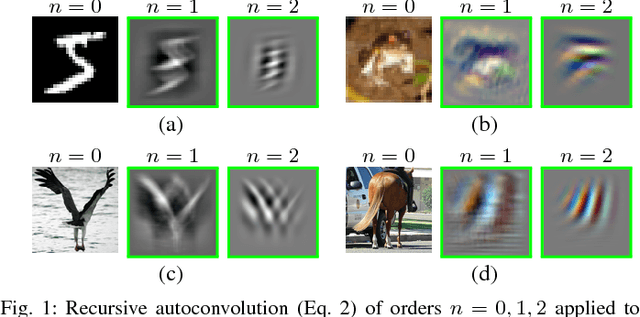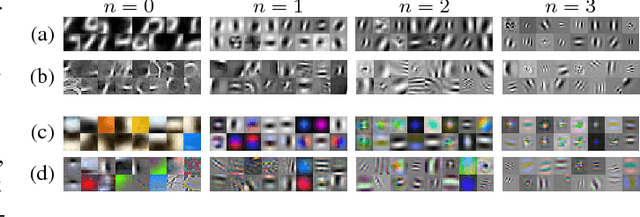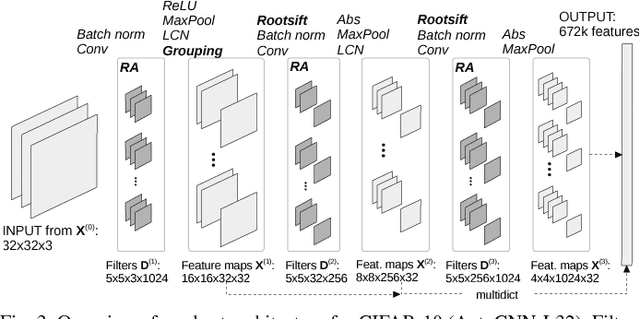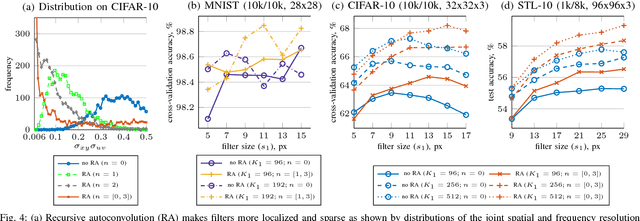Recursive Autoconvolution for Unsupervised Learning of Convolutional Neural Networks
Paper and Code
Mar 26, 2017



In visual recognition tasks, such as image classification, unsupervised learning exploits cheap unlabeled data and can help to solve these tasks more efficiently. We show that the recursive autoconvolution operator, adopted from physics, boosts existing unsupervised methods by learning more discriminative filters. We take well established convolutional neural networks and train their filters layer-wise. In addition, based on previous works we design a network which extracts more than 600k features per sample, but with the total number of trainable parameters greatly reduced by introducing shared filters in higher layers. We evaluate our networks on the MNIST, CIFAR-10, CIFAR-100 and STL-10 image classification benchmarks and report several state of the art results among other unsupervised methods.
 Add to Chrome
Add to Chrome Add to Firefox
Add to Firefox Add to Edge
Add to Edge